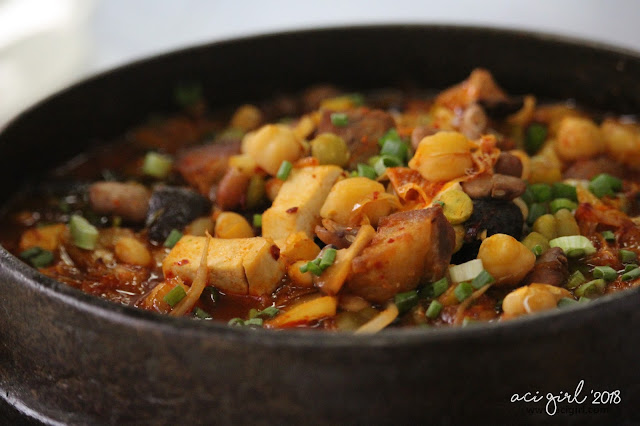Growing up with a Kapampangan Lolo is such a great treat. Kapampangan's in the Philippines are known for their excellent cuisine. Having a father who cooks well too is a super bonus. Every meal at home is special and great tasting. Too bad I was only good at eating. I didn't inherit their cooking skills nor even kept a single recipe. So if I can only attend every cooking class there is, I definitely would so I can cook something nice or at least edible :P
 |
| Cooking Class featuring recipes using U.S. Pulses |
Thankfully, a cooking class was lined up for us. Actually, I'm very excited about learning more about pulses and incorporating it into every recipe. My husband and I decided to cut down on pork, carbonated drinks, sugars and white rice. We noticed that my eldest son is gaining weight, I myself was not as productive as I was before (I guess it's a sign of aging too :P)Also, having a heart condition, and diabetes runs in our family, I better be safe, ready, and must be super healthy. With this, we were more serious to clean and healthy eating. And getting to knowing Pulses is truly a good start to a healthier 2018.
The Basic Preparations for U.S. Pulses
Cold Soaking | Hot Soaking | Soaking under Pressure
Cold Soaking or commonly known the Traditional Soak
Soaking Ratio 3:1 | 3 part water 1 part U.S. pulses at room temperature. Room temp. is a must because Hot water may cause the beans to taste sour, and cold water slows rehydration taking more time for the beans to cook. *Discard the original soak water.
Hot Soak | Quick Soak
This technique is quicker than traditional soaking. It is for those who are always in a hurry but still liking the classic prep, like most chef's and like my grandma's and grandpaps. Wanting the fastest way possible yet not compromising the quality and taste. For this method, simply cover the bean with water and boil for 2 minutes, cover pot and soak for 1 to 2 hours. *Discard original soak water and wash the U.S. pulses and replace with fresh water before cooking.
Pressure Soaking
The Express Way - This I say is the way I most like and most probably do. This method is so perfect for people like me, who keeps forgetting to prepare something in advance. Just kidding:P But seriously, this process is meant for working professionals who're always on the go and for people without patience. hahaha! again oh so me! So as this method is quickest, here's how: Cover the beans with 7cm of water bring up the pressure and cook for 5 minutes. Remove the pot from the heat and let the pressure drop naturally. *Discard the water and wash the U.S. Pulses then voila, you're good to go and proceed with your recipe :)

Watch Chef Norbert here:
https://youtu.be/aLCB1d9q74o?list=PLUrI9xBBG7OGumjfgapON_LCvHjUQuUJO
https://youtu.be/1DyqAutOtp0
Pulse Cooking Class
with Chef Norbert Ehrbar featuring dishes with U.S. Pulses
at UFM Baking and Cooking School Phrom Phong
Chef Norbert Ehrbar prepared 5 recipes featuring U.S. Pulses.
 |
| Asian Rice Noodle Bowl |
 |
| Durian Lentil Meat Balls |
 |
| Durian Lentil Meat Balls |
 |
| Mussels and ChickPea Asian Soup |
 |
| Mussels and ChickPea Asian Soup |
 |
| U.S. Bean Stew Korean Style |
 |
| U.S. Bean Smoothie Cooler |
 |
| U.S. Bean Smoothie Cooler |
For the recipes: stay tuned for I'll be updating this post soon.
Lunch Time
After the cooking demonstration is the hands-on cooking workshop. I felt nervous actually :P I don't like cooking much :) But I want to learn. So after a hearty-filling-and U.S. pulses incorporated meal, we're up for the cooking challenge.
Now it's our time to shine in the kitchen :)
Snaps for the Cooking Class
The challenge was we have to create our own recipe with a twist. There is a list of ingredients to use, also a dish name but with no procedure at all. Yikes!!!
Luckily, our team was assigned with an Asian bean salad dish to prepare. We decided to just recreate what Chef Norbert demonstrated earlier :P
It was a great experience to be part of the Pulses Cooking Class held in Bangkok
for The U.S. Pulses Trail in Bangkok.
I learned so much about Pulses and convinced to include it in my family's diet.
You should too!
Aci Girl goest to Bangkok for the U.S Pulses Trail
What you need to know about the U.S. Pulses


















No comments
Post a Comment